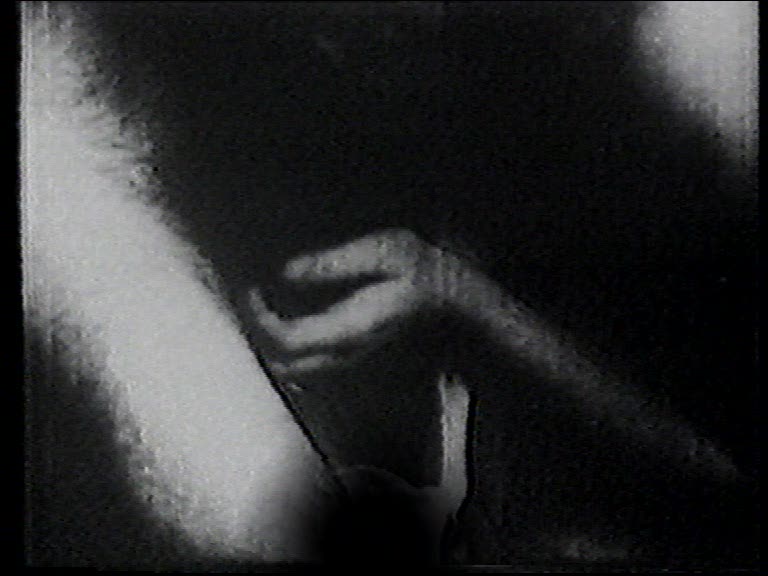
The Old Place - JLG & Anne-Marie Miéville, 1999, video




Histoire(s) du cinéma 4A: Contrôle de l'univers - JLG, 1998, video

Histoire(s) du cinéma 4B: Les Signes parmi nous - JLG, 1998, video
The image isn't good enough in video, but it's easier. You only have two images to work with in editing; it's like having two motifs in music, and the possibilities of creating a relationship between two images are infinite. The big difference is that if you shoot the three stone lions of Eisenstein in video, it can be an entire Warhol movie.--Jean-Luc Godard, interviewed by Jonathan Rosenbaum in 1996, "Godard in the Nineties", Film Comment 34.5, 1998, p.60.

Histoire(s) du cinéma 4B: Les Signes parmi nous - JLG, 1998, video




Film socialisme - JLG, 2010, digital video
-

Histoire(s) du cinéma 4B: Les Signes parmi nous - JLG, 1998, video

Hiroshima, mon amour - Alain Resnais, 1959, 35mm
Rivette: Resnais's great obsession, if I may use that word, is the sense of the splitting of primary unity: the world is broken up, fragmented into a series of tiny pieces, and it has to be put back together again like a jigsaw. I think that for Resnais this reconstitution of the pieces operates on two levels. First, on the level of content, of dramatisation. Then, I think even more importantly, on the level of the idea of cinema itself. I have the impression that for Alain Resnais the cinema consists in attempting to create a whole with fragments that are a priori dissimilar. For example, in one of Resnais's films two concrete phenomena which have no logical or dramatic connection are linked solely because they are both filmed in tracking shots at the same speed.Godard: You can see all that is Eisensteinian about Hiroshima because it is in fact the very idea of montage, its definition, even.Rivette: Yes. Montage, for Eisenstein, as for Resnais, consists in rediscovering unity from a basis of fragmentation, but without concealing the fragmentation in doing so; on the contrary, emphasising it by emphasising the autonomy of the shot. It's a double movement: emphasising the autonomy of the shot and simultaneously seeking within that shot a strength that will enable it to enter into a relationship with another or several other shots, and in this way eventually form a unity. But don't forget, this unity is no longer that of classic continuity. It is a unity of contrasts, a dialectical unity as Hegel, and [Jean] Domarchi, would say.--extract from "Hiroshima, notre amour", a roundtable published in Cahiers du Cinéma, July 1959 (trans. Liz Heron), Cahiers: The 1950s, Harvard UP, p.60-61.

Hiroshima, mon amour - Alain Resnais, 1959, 35mm

De l'origine du XXIe siècle: à la recherche d'un siècle perdu - JLG, 2000, video
Cinema as it was originally conceived is going to disappear quite quickly, within a lifetime, and something else will take its place. But what made it original, and what will never really have existed, like a plant that has never really left the ground, is montage. The silent movie world felt it very strongly and talked about it a lot. No-one found it. Griffith was looking for something like montage, he discovered the close-up. Eisenstein naturally thought he had found montage... But by montage I mean something much more vast [...] to return to what I said at the beginning: the idea of cinema as art or the technique of montage. Novels are something else, painting is something else, music is something else. Cinema was the art of montage, and that art was going to be born, it was popular. Mozart worked for princes, Michelangelo for the Pope... Some novelists sold in huge quantities, but not even Malraux, even Proust, didn't sell immediately in the same quantities as Sulitzer. Nor does Marguerite [Duras]. Suddenly, very quickly, cinema rose in popularity, much faster than Le Pen. In three years it went from thirty spectators to thirty million. Painting has never been popular. If Van Gogh were popular his paintings would go on tour. But cinema was popular, it developed a technique, a style or a way of doing things, something that I believe was essentially montage. Which for me, means seeing, seeing life. You take life, you take power, but in order to revise it, and see it, and make a judgment. To see two things and to choose between them in completely good faith.--Jean-Luc Godard, extract from a lecture on montage at FEMIS, 1989; cited in "Montage, My Beautiful Care, or Histories of the Cinematograph" by Michael Witt, The Cinema Alone (Amsterdam UP, 2000), p.35.

The Old Place - JLG & Anne-Marie Miéville, 1999, video

Histoire(s) du cinéma 4A: Contrôle de l'univers- JLG, 1998, video
-


-

The Old Place - JLG & Anne-Marie Miéville, 1999, video
No comments:
Post a Comment